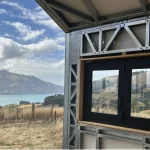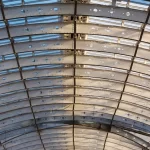In recent years, there has been a noticeable shift in the construction practices of builders across New Zealand. At the forefront of this change is the growing preference for steel frame construction. This innovative approach not only enhances the structural integrity of buildings but also offers a range of advantages that traditional methods may not provide. In this blog, we will explore five compelling reasons why builders are making the switch to steel frames, making the construction process more efficient, durable, and environmentally friendly.
1. Enhanced Durability and Strength
One of the most significant advantages of steel frame construction is its unparalleled durability. Steel frames are resistant to various environmental factors that often degrade traditional wooden structures, such as termites, rot, and warping. Unlike wood, which can be susceptible to moisture and insects, steel remains robust even in New Zealand’s diverse weather conditions. This inherent strength means that buildings can withstand natural disasters, including earthquakes, making them a safer option for homeowners.
As a result, builders find that investing in steel frames reduces the need for extensive repairs and maintenance down the road. Where wood may require regular treatments to prevent damage, steel frames need little upkeep. This cost-saving benefit is a crucial factor for builders and homeowners alike, fostering a relationship built on peace of mind and long-term stability.
Moreover, the structural integrity of steel allows builders to create larger, open spaces without the need for excessive support beams. This opens up a world of design possibilities, enabling architects to craft innovative spaces that feel expansive and free-flowing. Ultimately, enhanced durability in steel frame construction leads to safer, stylish homes that can stand the test of time.
2. Design Flexibility and Aesthetic Appeal
Another reason builders are gravitating towards steel frames is the impressive design flexibility they provide. Unlike traditional materials, steel can be easily molded and manipulated to take on various shapes and forms. This allows builders to explore creative designs that cater to modern aesthetics while also meeting functional needs. The clean lines and sleek appearance of steel-frame buildings often capture the attention of prospective homeowners, contributing to their overall appeal.
Furthermore, the ability to create larger, column-free spaces with steel frames means that interiors can be adapted to suit changing lifestyle needs. Whether it’s a spacious open-plan living area or a segmented workspace, the versatility of steel enables builders to tailor homes to their clients’ desires. This adaptability is particularly important as homeowners increasingly seek spaces that can evolve over time.
This aesthetic and practical appeal of steel frames is further enhanced by the variety of finishes available. Builders can opt for sleek metallic finishes, traditional cladding, or modern panels to create the ideal look. Homeowners can thus achieve a unique style that expresses their personality, all while benefiting from the strength and durability of steel. This fusion of form and function makes steel frame construction an attractive option for modern builders.
3. Faster Construction Times
Time is a critical factor in any construction project, and steel frame construction significantly shortens overall building times. With steel components manufactured off-site, the assembly process on location is faster and more efficient compared to traditional building methods. This is especially beneficial for commercial projects, where delays can lead to increased costs and lost revenue opportunities.
Additionally, because steel frames are pre-fabricated, there’s less waste produced during construction. This increase in efficiency means builders can take on more projects over a given timeframe, ultimately enhancing their productivity. This capability allows for a faster return on investment for both builders and homeowners.
Moreover, the quick assembly of steel frameworks can mean builders face fewer weather-related delays. Steel doesn’t warp or swell, allowing work to progress in varied weather conditions, ensuring that projects stay on track. When construction timelines are expedited, the entire process becomes more enjoyable for everyone involved, making for happier builders and satisfied clients.
4. Sustainable and Environmentally Friendly Choice
Sustainability is increasingly at the forefront of architectural and construction practices. Steel is one of the most recyclable materials available, with a significant amount of steel used in new constructions coming from recycled sources. This commitment to environmental responsibility means that when builders choose steel frames, they are engaging in a practice that reduces overall environmental impact.
Moreover, steel frames contribute to energy-efficient buildings. Many modern steel constructions are designed to include energy-efficient practices, such as thermal insulation, which can drastically reduce heating and cooling costs for homeowners. This commitment to sustainability not only draws eco-conscious clients but also aligns with New Zealand’s goals for environmental conservation.
In this way, choosing steel frame construction becomes not just a practical choice, but also an ethical one. Builders who prioritize sustainability can distinguish themselves in the market and appeal to a rapidly growing audience of consumers who are keenly aware of their options. As a result, not only do they build stronger homes, but they also contribute positively to the environment.
5. Cost-Effectiveness Over Time
While the initial costs of steel frame construction may sometimes appear higher than traditional wood framing, the long-term financial benefits are compelling. The durability and low-maintenance nature of steel significantly reduce repair and replacement costs. Homeowners won’t have to worry about spending on treatments to protect against pests or rot, resulting in substantial savings over the lifespan of the building.
Additionally, the faster construction times associated with steel frames lead to quicker occupancy and less downtime, which translates directly into cost savings for builders and homeowners. Reduced labor costs and increased efficiency mean that builders can operate more profitably, while homeowners can start enjoying their spaces sooner.
Finally, steel’s resilience means that homes retain their value longer and require fewer renovations over time. As trends continue to favor modern, durable structures, homes built with steel frames are likely to appeal to future buyers, thereby enhancing overall market value. This investment in steel frame construction isn’t just about immediate savings; it’s about building a strong future.




